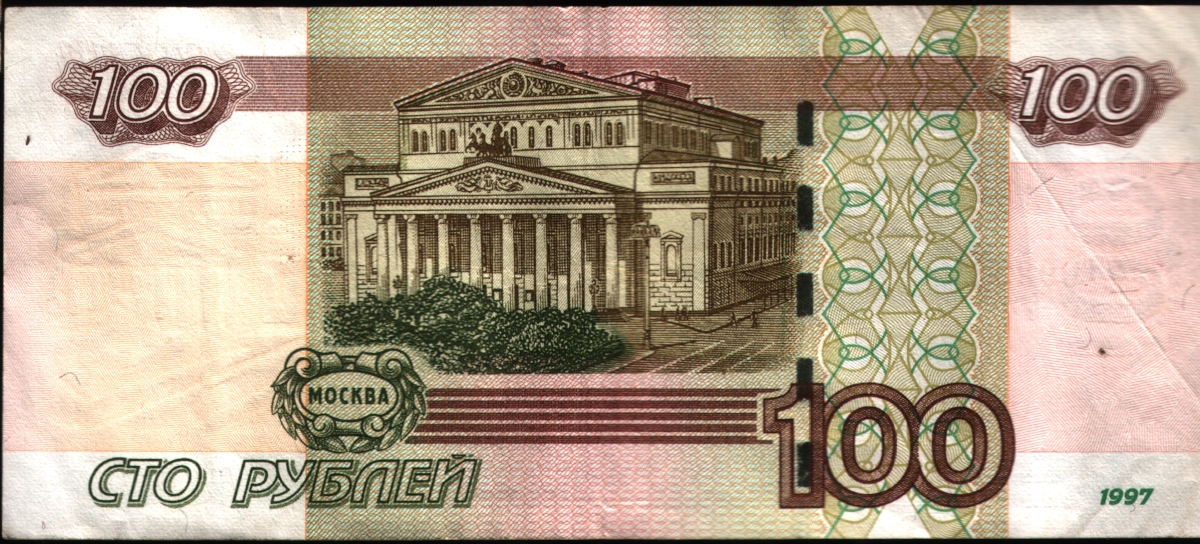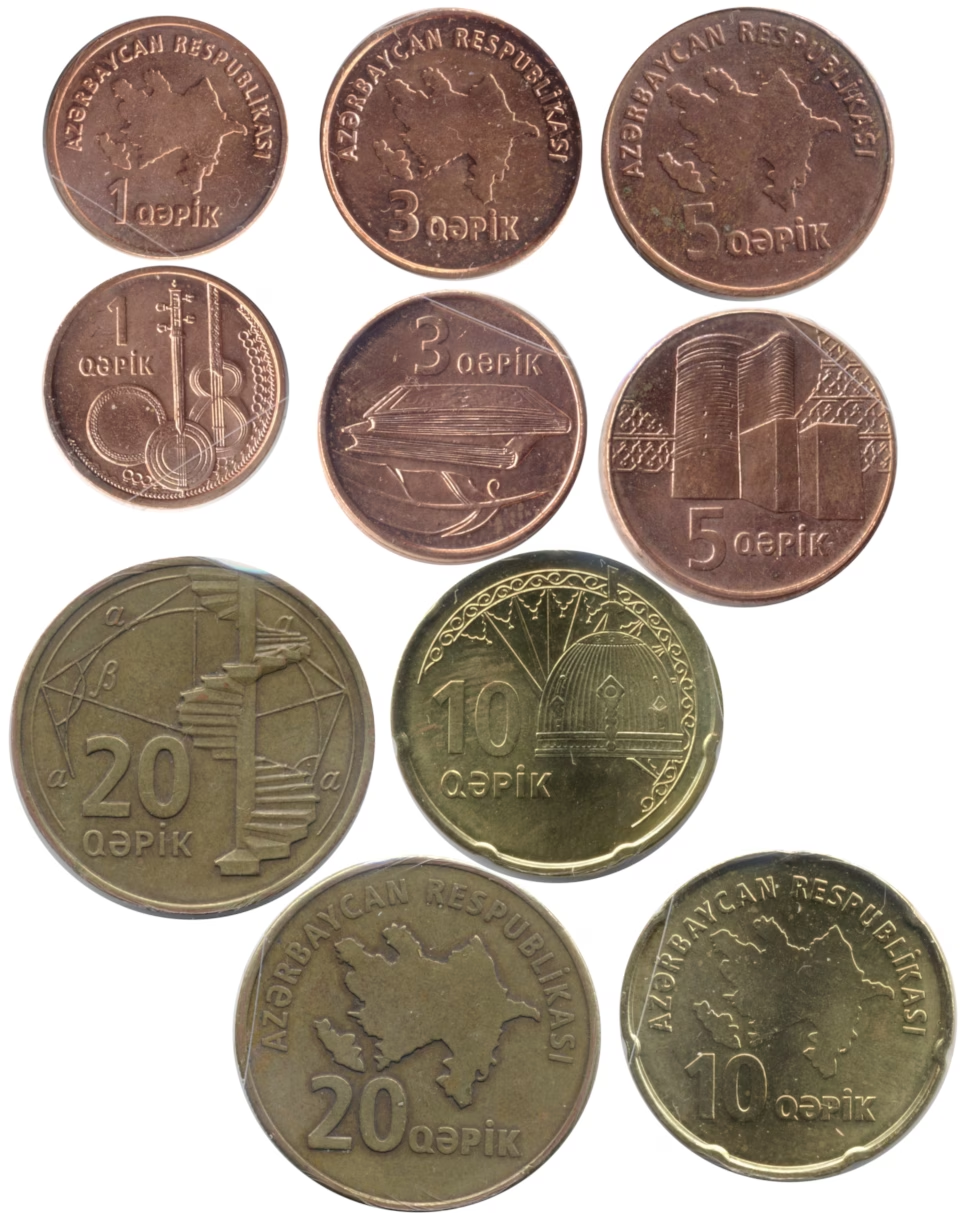

Your browser does not support .avif images. Please view on a modern desktop browser, released after autumn 2021. No apologies for not supporting Microsoft’s rubbish. View this page on the desktop mit Google Chrome from version 82, Opera from version 71, Safari from version 16.1, oder even better Firefox from version 93.
Itinerary, introduction and FAQ
Certain German expressions must be immediately forgotten upon arrival, such as “food safety inspection,” “environmental awareness,” “structural engineering,” or “fire safety inspection.” Georgia is certainly not a country for early risers. Nothing happens before 10 a.m. Museums, etc., close at 5 or 6 p.m. (closed on Mondays). Regular shops usually open until 6–8 p.m. Small grocery stores close late and some operate 24 hours a day (including restaurants). Government offices and ticket offices usually close for an hour at lunchtime, which can be any time between 12 and 3 p.m. Free Wi-Fi is widespread and internet cafes are a dying business.
Exchange rates (Oct. 2013, in parentheses, Apr. 2021 and May 2025): 1 € = 2.45 (9.66 44.3) Turkish pounds (T₤), 2.25-8 (4.11 3.11) Georgian lari (₾) to 100 tetri, 550 (625 436) Armenian drams (Dr), 50 (90 90.3) Russian ₽ (R).
All prices below are from the travel period, i.e., as of 2013.
The situation has changed by 2023. Due to the border war between Ukraine and Russia that began in February 2022, the euro has fallen sharply. Throughout 2023, it was worth just 2.75 lari. Combined with inflation over 20 % and the long-term immigration of approximately 110,000 Russian citizens, whose housing needs have led to a severe shortage of accommodation, a trip to Georgia is effectively twice as expensive for Central Europeans as it was at the beginning of 2022. (€ 1 on April 24, 2023, will buy you 424 Armenian drams or 21 Turkish lira.) Listen to A Dollar Ain’t a Dollar Any More about the “good old days” of 1944.
Georgia is a completely safe country to travel in. Only very rarely does anyone get loud and upset (actually, only nagging market women). When I make general statements about “Georgia/Armenia,” they mainly apply (with reservations) to the capitals. One striking feature is the almost complete absence of graffiti and underwear advertisements featuring half-naked women. Many things reminded me of southern Spain in the early 1980s, before the country joined the EU in 1986.
There remains virtually no postal service in Georgia; mailboxes don’t exist. Home deliveries are only made by personal delivery, this includes postcards; notified mail must then be picked up. The few remaining post offices are located in dark, dilapidated buildings. Postage is extremely high (a postcard to Germany costs 4 ₾ = € 1.77, a letter costs 10 ₾!), but I must admit that all my cards arrived. Parcels are sent by courier at corresponding prices. In Armenia, the Dutch company Haypost operates the service for the government in the usual way (postcard 240 Dr. = € 0.43, letter 340 Dr).

Transportation: A ''Marshrutka'' (russ. Маршрутка) is a small bus. Throughout the former Soviet sphere, these are the traditional yellow “shared taxis” or minibuses that handle a large portion of local passenger transport and, in the provinces, long-distance travel. They all have in common: cramped spaces and poor air quality, but reasonable prices. Often overcrowded, journeys are extremely uncomfortable for standing passengers, especially those over 1.70 m tall. In addition, the cramped conditions often result in passengers' body odor being clearly noticeable. Payment is made to the driver, preferably with exact change, when boarding or alighting, depending on local custom; in Tbilisi, sometimes with a prepaid card. There are no tickets.
In larger towns, there are also regular bus lines with 20-seater buses [which have been modernized in Tbilisi in recent years], mostly made in China. The system works surprisingly well, once you get the hang of it, even without timetables and route maps. Just look a little stupid, ask for the location and friendly people will put you in the right vehicle. Considering fuel prices, the fares are around 1 € ridiculously low.
The entire train timetable for the country fits on a single sheet of A4 paper.
On the roads of Georgia, traffic lights and solid white lines are at best “recommendations.” However, since everyone drives with foresight and consideration (none of that German “I have right of way, therefore I can mow you down”), traffic flows fairly smoothly. Armored vehicles, with their blue lights and sirens, seem to have priority. I've seen only one accident in three weeks—in Tbilisi’s busy main square during rush hour. [It should be noted that privately registered vehicles are not required to have third party liability insurance. Only about one third has it, whist the limit is a meagre 5,000–10,000 Lari.]
Armenians drive much more civilly, sometimes even braking at zebra crossings. Pedestrians even wait until traffic lights (with a second hand until they change) turn green.

Shopping: Absolute honesty prevails in business to an extent I've previously experienced only in Japan. Receipts are issued even for the smallest amounts. When you buy fruit and vegetables (significantly more expensive in Tbilisi than in the countryside) in the numerous markets, you realize the enormous loss in variety our standardized EU regulations have caused. Getting change can be a problem in the “bazaar,” but with a bit of asking around there’s always someone helping out.
The range of goods is very reminiscent of similar establishments in India: lots of plastic junk imported from China, Turkish household goods and fruit and vegetables from local producers.
In Armenia and occupied Abkhazia, there are also many lower-quality Russian goods (the latter often at prices significantly higher than for similar items in Germany).
Supermarkets, where they exist, are two to three times more expensive for local products than the numerous small shops on every corner. In the region, you’re probably never more than 500 meters from a store for essentials (bread and vodka); it feels like every other shop is also a currency exchange office. Roll film is practically unavailable in Georgia outside of Tbilisi. If it is available, the only available film is Fuji ISO 200, often close to its expiration date, for around 4 €.
Clothing and shoes are mostly imported from Turkey and people wear subdued colors. For Central Europeans buying such is hardly worthwhile. There are also a few expensive boutiques with top-brand clothing, but the prices are significantly higher than those in Central Europe. There doesn’t seem to be a proper clothing store in Batumi. Used clothing resold from charity collections is offered on every corner. It’s all the more surprising that you hardly see anyone wearing torn or shaggy clothes.
People are tolerant of the more pleasurable things in life. Smoking is permitted pretty much everywhere. In Georgia cigarettes cost a hefty ₾1,70 bis 3 (0,75-1,30 €). In Armenia, they become more affordable: a pack starts at 120 drams (22 cents). Cigars are only available perfumed, expensive and smelly. At the market in Batumi, tobacco is sold loose in bales. Officially, the minimum smoking age is 18, but I've been begged for cigarettes or lighters by several 10- to 12-year-old boys in Batumi (like in Spain before 1985, where the minimum age was “as soon as you’re tall enough to look over the counter”).
The large number of pharmacies is striking. It also shows the improvement in quality of life for older people that artificial hip joints have brought in Germany. In Georgia, where these aren’t covered by health insurance, there are a shocking number of hunched, obviously suffering pensioners.

Religion: I know too little about the rites of the autocephalous Georgian Orthodox Apostolic Church or the Armenian Apostolic Church to be able to comment on them; in neither case are schismatic Orthodox churches. I can only view the churches I visited as an uninformed layperson. They were comparatively small and modestly furnished and in many cases had been renovated after decades of useful use by the Soviet regime, for example, as granaries. It was striking that people cross themselves (triple times) as they pass basilicas, in a manner that deviates from the Catholic rite. Occasionally, I saw believers kissing every corner of a church, as well as the icons inside. As everywhere in Christian culture, most churchgoers are women, who often wear a thin headscarf, though without covering themselves like practicioners of the religion-of-peace™.
Thin sacrificial candles, usually honey-yellow, are also lit in private homes. There, you’ll often find a wall decorated with holy pictures in front of which daily rituals are performed. A small image of Jesus can be found next to many doorframes.
Georgian monks are also responsible for the Buddha becoming a Catholic saint in 1590. Textual analyses of medieval manuscripts showed that his life story reached Europe, where it was recognized in a distorted form in the legend of Barlaam and Josaphat. He is still venerated today, especially in Sicily.1
Politics and economy: People are still struggling with the Soviet legacy and the war damage from the Russian invasions in 1992/3 and the self-provoked war in 2008. [More on this in the section Notes] It is therefore surprising how cheerful and friendly most people seem to be.
The minimum subsistence level was set at ₾146 (65 euros) in the summer of 2013. The minimum pension benefit of ₾150. A kind of “social welfare office” exists. Unemployment seems to be very high. Therefore, in Tbilisi and Batumi (otherwise rarely), one sees numerous beggars, often bent-over old women, or sellers of small quantities of tissues, snacks, individual cigarettes, etc. I have only seen homeless people living in the park twice. The average net income is ₾5-600 (222-66 euros). The national average rent for an 85 m² apartment is ₾120-150 and in the cities it is probably significantly higher. Some schools still teach in shifts, like we had after the war.
I don’t presume to understand Georgian politics; it must have been quite chaotic in the first years of independence. The “Rose Revolution” – as we now know, orchestrated by the US intelligence servics – brought young “reformers” to power, who, as instructed, restructured the state in a neoliberal sense. A presidential election was to be held on 13th October 2013. It has become a political tradition in recent years for top politicians voted out of office to quickly swap their seats for a prison cell. The truly powerful man pulling the strings is also the richest man in the country, Bidzina (Boris) Ivanshvili, who also serves as Prime Minister. A French citizen since 2010, he had not even he Georgian citizenship. presidential election was to be held on 13th October 2013. [More on this in the section Notes]
At the same time as the election, a constitutional amendment is being proposed that would transform the strongly presidential system into a cabinet system. Ivanshvili is sponsoring former university rector Giorgi Margvelashvili, whose posters with candidate number 41 plaster many walls. [He actually won with well over 60 %.] Candidate number 5 reminds me fatally of Markus Söder [The law-and-order populist premier of Bavaia, who never has done an honest day’s work outside politics]; on his posters only the colour of his tie appears to be different. Ivanshvili reportedly wants to retire from politics after the election, but is reserving the right to name his successor. [Finally resigning as party chairman 2021.] Georgia leaned on the US and NATO soon after gaining independence, which is probably the real reason why Russia occupies two provinces south of the main Caucasus ridge, simply to strategically keep a foot in the door, for quick reactions as it did during the 2008 invasion. A significant portion of Georgia’s military spending (7 % of GDP) is borne by the Americans, who in this way secure massive investments in the new oil pipelines.2
he poster featuring one of the Klitschko brothers, presumably paid for by an American NGO, which was intended to spread the feminist slogan “gender equality,” seemed completely nonsensical in light of the concentrated self-confidence of Georgian women, who, unlike our feminists, do not lose their femininity and, at the same time, have their own place in society.3 [Although there is still a taboo regarding pre-martial sex.] Widows in the countryside wear black for life. W

Food: I only treated myself to dinner in a restaurant once in those three weeks, because Georgian fast food is so amazing that I could live off it for weeks. I'm specifically referring to “warm bread,” which comes in a variety of forms. This primarily means fried bread or puff pastry parcels like khachapuri (square, filled with cheese), as well as numerous other pastries whose names I never learned. With a little practice, one can tell what’s inside by the shape: egg, minced meat with or without potatoes and much more. Prices range from ₾0.60 to 2. A “shashlik” is any kind of barbecued meat skewer (without vegetables), served with raw onions or wrapped in pita bread. Kinkhali is touted as a particular specialty. In fact, it’s nothing other than the local variation of dumplings known in Japan as gyōza boilded in water but bigger. Similar dumplings are known in Tibet as momo bekannt sind – one can clearly see the import by way of the Silk Road. Döner kepabs are called Schwarma rolled in flatbread. Prices ranging ₾3-5 make it a luxury snack.
Chopped (wal)nuts are added to many dishes. Spicy seasoning is rare, with garlic being used.
Coffee is drunk finely ground in the Turkish style, or Nescafe, or comparatively thinly brewed. This becomes understandable when you consider the retail price: A 100 g packet (the standard size) costs from € 0.60. ”Proper” coffee, served in a cafe or from an espresso machine, costs ₾2-3 per paper cup – for the same price, you could also get a moderate lunch. Tea grows in Georgia (and the Turkish Rize region) in tolerable everyday quality.
Half a litre of beer costs 1.20-30 ₾. It tastes comparatively fruity. Chacha is the local answer to grappa and more expensive than vodka. More on this and wine in the section on Kutaisi.

Trabzon
Anreise über Trabzon nach Batumi
Preparations. The real impetus for this trip was that I chanced upon the Turkish Pegasus Airline website in the spring. After some fiddling around, I found a cheap return flight from Tehran. I then booked a one-way flight to Trabzon, intending to travel overland through Georgia (which I knew nothing about) and Armenia to Persepolis.
Apparently it is easier nowadays days [2013] to get to Iran, which, as mentioned elsewhere, I was unable to travel through from India early 1994. [Since 2019 an electronic visa is available for most Europeans.]
The collection of documents for the Iranian visa was still impressive: a two-page form, a color photo, proof of health insurance, flight confirmation and the nice additional form: Are you a terrorist? Have you ever been one? Are you coming to train Iran to become one?
On top of that, a reasonable € 80 fee. After I'd gathered all the papers, I went to the consulate in Munich, where the nice gentleman then asked for a file reference number from the Foreign Ministry.
Excuse me?
Well, a number that has to be obtained in advance from the Foreign Ministry. He kindly said there are specialized travel agencies for that (who then force you into booking a luxury hotel). The cheapest offer I found online was an additional € 60. In all, a € 140 entry fee to spend a week driving around in a country with no beer, no pork and women only wrapped up? - Sorry, that’s not for me! [For several years now, eVisas have been much easier to obtain and, under certain conditions, can be had upon arrival at the airport.]
Azerbaijan, which is on the way, is similarly outrageously expensive for visas – they cost between US$ 100 and US$ 140.[You can now get a 30-day tourist visa online for US$ 24. You still have to register with the police by the ninth calendar day at the latest. Thanks to an EU agreement, you can get a visa in Berlin free of charge upon application on paper, provided you have a disability card.]
Pegasus was even kind enough to offer me the option to use only the portion of the return flight from Istanbul at no extra charge.
Trabzon
I landed on the final flight of the day at 10:30 p.m. My bags wasn’t on the conveyor belt. This wasn’t because it had been lost, but because, while immigration checks take place in Istanbul in Turkey, customs checks for transit luggage only take place at the destination. After that was sorted out, I left the domestic terminal, walked 200 meters to the empty international terminal, woke up the security guard, went through the full security checkpoint, took off my shoes and belt … and through a side door into customs, where my name was immediately called. Bureaucrats – “the wide world over.”
The last bus to the city center, six kilometers away, had already left, of course. I set off next to the highway and would have gladly laid down with my sleeping bag in the nearest park. Unfortunately, it had rained all day and the ground was soaked. After about an hour, I reached the vicinity of the bus station. The first hotel was full. The doorman at the second, the Hotel Terminal, realized he could make a profit and charged me 40 TL for a room that was worth at most 25 (shower in the room, dunny in the hallway). He kept my ID for the paperwork.
By now I was pretty exhausted, so it was time for a shower. After about a quarter of an hour, there was a knock. I thought the doorman was bringing my ID, so I opened it with a towel around my waist. It wasn’t the doorman standing at the door, but rather, let’s call her “Natasha,”  a rather sultry Russian beauty on special services. This sort of thing has happened to me a lot in Southeast Asia, but in an extremely conservative part of remote Turkey, this service took me by surprise, so I politely declined. She had more success with the roommate, which was clearly audible until about 2:30 a.m.
a rather sultry Russian beauty on special services. This sort of thing has happened to me a lot in Southeast Asia, but in an extremely conservative part of remote Turkey, this service took me by surprise, so I politely declined. She had more success with the roommate, which was clearly audible until about 2:30 a.m.
At ten o'clock in the morning, we continued on by minibus. I had originally planned to walk the approximately thirty kilometers from Hopa, the last town in Turkey, to Batumi. But after seeing the only road during the bus ride from Trabzon, I quickly gave up. There’s only one highway along the coast with several tunnels. Otherwise, the mountains stretch all the way to the sea. If I had done it on foot with my cracked knee, a week wouldn’t have been enough for the trek over hill and dale.
Sarpi (border crossing to Georgia)

Exiting Turkey is subject to comparatively strict controls. Trucks are backed up several kilometers from the border.
The relaxed attitude of the Georgians is immediately apparent. In front of the border building, a young police officer sits with his legs apart on a white plastic chair, peering boredly out from under his baseball cap. Photographs are taken upon crossing the border; there was no customs check. You should exchange cash at the bank in the terminal building. The rate there isn’t good either, but the exchange offices at the border give 10-12 % less than you'd get in Batumi. Taxis are waiting directly across the border, but there’s a municipal minibus (number 101) that travels the 16 km to Batumi for 1.00 Lari. Halfway there are the ruins of Gonio, a remarkable Roman fortress.
In a brochure from the tourist office in the border building, the following notice was found, which I would like to quote here. Prohibited is:
- Driving under the influence of alcohol, narcotics, or psychotropic drugs. (Penalty up to ₾200)
- Driving in a moving vehicle without a seatbelt. (Penalty ₾40)
- Using a mobile phone while driving. (Penalty ₾10)
- Riding a motorcycle without a helmet.
- Goods worth more than ₾500, imported for personal use are subject to customs duties of 18-30 %.
- Crossing the border with drugs or explosives.
- Cash in excess of ₾30000 must be declared.
Permitted is [in Georgia]:
- Drinking alcohol (whether indoors or in public).
Changes 2018
Drinking in public has been officially banned, with a fine of 50–150 Lari. Nobody seems to care too much about it, unless you catch a police officer in a bad mood.
Since 2018, smoking has also been banned in the workplace and in all publicly accessible buildings. - To participate in gambling in casinos or other places.
- To smoke anywhere, except in administrative buildings.
- Import up to 30 kg of goods worth less than ₾500 duty-free for personal use once a month.
- Wear whatever you like.
“Thank God for that” is what I’ll say here! Or perhaps it would be better to say “Allah ul akubar  ”
”

Otherwise, the police force has been reformed since 2006, meaning that anyone suspected of even the slightest corruption has been dismissed, so that about two-thirds of the very numerous police officers seen on the streets, who were trained according to American standards, are said to be incorruptible new recruits. A unique occurrence among post-Soviet republics. Only the baseball caps are somewhat tasteless. There are many security guards and police cars on the streets. Why, I'm not entirely sure – they don’t really seem necessary.
Batumi
I must confess, I hadn’t been in the country for an hour and I was in love – with the obvious joy of life and the open-mindedness of the people.


Batumi, located between the crumbling Ottoman Empire and the emerging Soviet power, was occupied by the British in 1919–20; it even had its own postage stamps. This was because—as numerous late 19th century buildings still demonstrate today—the port was an early, important transshipment point for oil from Baku. Today, the Americans are more likely to be investing, with Donald Trump being the loudest voice on this.4
Luxury hotels of the Sheraton and Radisson Blue chains have their own casinos.
In the better neighborhoods near the beach, modern architects were free to express themselves undisturbed, as in many other parts of Georgia. However, all these new buildings are beginning to show signs of decay after just a few years, as Georgians don’t perform maintenance (no caretakers!). If repairs are needed, they are usually only make-shift. The facades of the old, gray Soviet buildings have been given a makeover: the balconies were “spruced up” with colorful, uniform plastic coverings and the house walls are painted in some garish colors – a fair bit of Potemkin here. There’s probably simply not enough money for serious renovations. Numerous buildings, however, especially in the areas affected by the two wars (1992/93 and the Russian invasion in 2008), remain empty. What they all have in common is that even the window frames have been ripped out. At many of the entrances to buildings, I wondered: “Do people really still live here?” In Berlin or Frankfurt, I wouldn’t have dared to walk into something like this on my own (the term “derelict building” would often be a compliment), even in daylight. Likewise, many of the electrical installations are simply frightening, such as a socket hanging loosely from the wall in the shower cubicle.
However, the joie de vivre and friendliness immediately apparent upon crossing the border make up for everything. The streets are swept in the morning and the garbage cans scattered everywhere are regularly used. Batumi is a bit like the country’s "Wild West"; as a border town, appropriate services are offered to guests from more restrictive societies. Gypsy clans go about their usual business here and in Tbilisi and there are numerous groups of children begging. [Disappeared since around 2015.]


The bazaar reminded me strongly of the range of goods offered at similar establishments in India, but without the stench, fraud and intrusiveness. Batumi is said to get quite busy in July/August. The pebble beach, which is cleaned daily, is surprisingly pleasant to lie on.
A cable car opened in 2011 (₾ 3 retour 2019: ₾15) runs from the harbor over 2.5 kilometers and a 400-meter elevation gain to a nearby mountain with magnificent views of the bay. In the same corner, there’s also a beautifully illuminated Alphabet Tower that honors the Georgian script and a Ferris wheel. The old town is also undergoing extensive renovations. Some failed investment are obvious.
One wouldn’t go into a “Turkish Bar” in Batumi to eat, just as you wouldn’t go to a ”Russian restaurant“ in Trabzon – in both cases, the waitresses are on the menu.
The Makhinjauri train station is located just under ten kilometers north of the city; the inner-city station was bombed. [In 2015, a new station (At the counter they try to sell foreigners only first-class tickets for the modern Swiss-made trains that depart every other day shortly after midnight to Tbilisi. These aren’t worth three times the price of second-class tickets. In both cases, the seatbacks aren’t adjustable, making the nearly six-hour journey uncomfortable.) opened closer to the city, but still out of town.] Nearby is an extensive botanical garden called Mzwane Konzchi.
Batumi’s “Bund”
A promenade nearly seven-kilometer-long runs behind the pebble beach, which is kept very clean, is said to get very busy in the summer.
My conclusion: a very lively, colorful and vibrant city with enormous potent
Mein Fazit: eine sehr lebendige, bunte, lebensfrohe Stadt mit gewaltigem Potential. The Website of gobatumi.com is well designed.

Zugdidi and the Inguri Bridge

Zugdidi is the capital of the region of Mingrelia and Upper Svaneti, in western Georgia. Ingiri train station is three kilometers outside. Worth seeing is the museum in the Dadiani family castle, located in a well-kept park at the northern end of the town’s main avenue. The adjacent botanical garden has been largely neglected since the last Russian invasion and lacks any scientific signage. I counted a total of three gardeners, who were using scythes to combat the weeds. However, the dimly lit park benches are popular in the evenings with smooching teenage couples. With the latter, it’s noticeable that in the countryside, a female friend is almost always there to act as a chaperone and many of the couples are considerably way into their twenties.
After the hostel on the outskirts of town showed off-season no signs of life, I moved into the overall satisfactory Zugdidi Hotel in the city center (₾ 50, a bit English). A taxi driver in front of the hotel drove me at the very un-Georgian hour of 7:30 in the morning to the Inguri Bridge, ten kilometers away, for ₾10.
To the “border” of Abkhazia: Inguri Bridge

On the Georgian side, there was a checkpoint where a very young police officer carefully inspected each of the numerous stamps in my passport (all of Southeast Asia). Only when I saw the Turkish entry did a hint of recognition cross his face. To "check out" such a serious case, the boss had to be summoned from the back office – halfway out, he quickly returned to grab his gun, which was lying openly on his desk. It took the boss ten minutes to scan the passport.
In front of the bridge, horse-drawn carriages waited for the crossing. I chose to walk the approximately one-kilometer. Further ahead, there was another military post and the road bore clear traces of tank tracks. The Inguri Bridge, in extremely poor condition, spans a good 800 meters across a semi-arid valley.
Abkhazia
On the other side, a soldier directs me into a corridor with three-meter-high fences on both sides, until you reach the actual border post. (Everything is less threatening than provisional. The English secure every access to the cross-Channel ferries better.) A Polish tourist with her five-year-old daughter is waved through with me, making us the first customers of the day (border opens at 8:30 a.m.). This is followed by a Soviet-style passport check (all pages counted), a look into the eyes by the border guard, etc.5
Entry: The procedure for entering the “independent” Republic of Abkhazia is unique. One applies to the “Foreign Ministry“ by emailing a copy of ones passport – interestingly, unencrypted by way of a gmail account, presumably so that “big brother” NSA can read along undisturbed – after approval one prints out an invitation letter. This letter is retained at the border. The tourist must then report within three days to the ”Ministry of Repatriation” (which I'd better translate loosely as “expulsion” here, because their task is to expel the remaining ethnic Georgians to their “homeland” and make life difficult for potential returnees amongst the approximately 300,000 refugees who fled during the wars 1991/92 and 1998) in the “capital,” Sukhumi (110 km away; minibus 300 ₽) to obtain the actual visa.
Travel guides still list the location of the office [2013] as “2nd floor of the Ministry of Foreign Affairs, Lagoba Ave. 21.” This is no longer true; only invitations come from there. Visas can be obtained as loose sheets on the ground floor of the Ministry of Expulsion at ul. Sacharova (9 a.m. to 12 p.m. and 1 p.m. to 5 p.m.; shorts are discouraged; German and English are spoken).
The visa slip, which would have made a nice souvenir, is retained upon exit. Before colecting it, one has to pay the a fee (10 US$) at the nearby Sperbank (Filiale Lagoba Ave, ggü. Nr. 37, grünes Schild). This goes surprisingly smoothly. A friendly smile, the question “Visa?,” and “Olga” knows what’s going on.
Warning: You should definitely get ₽ cash in Zugdidi. There are no exchange facilities at the border (or any other facilities, such as restrooms). Anyone trying to pay with lari will be charged double! Anyone who doesn’t enter in the morning will have to change in Gali, as hardly any minibuses pass through.
Foreign credit cards and mobile phone cards are not accepted in Abkhazia due to the lack of recognition. Exchange offices (9 a.m. to 4 p.m./7 a.m.) are few and far between. Prices are at Central European levels, but you mostly get low-quality Russian-made junk or overpriced imports from Turkey. A certain boost was expected from the [2014] Winter Olympics in Sochi, which are occasionally protested against in Georgia.
During Soviet times, Abkhazia was a semi-autonomous part of the Soviet Republic of Georgia. Indeed, there are minor cultural differences that justify autonomy. However, after the Transcaucasus was incorporated into the Tsarist Empire, many Georgians, Balts and Russians settled here, so that even before 1900, (Vgl. Die Landschaft Abchasien; Geographische Zeitschrift, 2. Jg., 6. H. (1896), p. 345-347.) the native population only accounted for 17 %.
At the last Soviet census in 1989, Abkhazia had a population of 525,000 (17 % Abkhaz, 46 % Georgian). Following the ethnic cleansing, the current population is estimated at around 180,000. 20–30,000 Georgian refugees are said to have returned, particularly to the Gali (Russian: Gal) region.
As with South Ossetia (= Samachablo; where the alleged “independent culture“ is even more fabricated), these are essentially provinces of Russia for which the Kremlin maintains a local government. A large portion of the budget there comes from Russia, as does the civil service. Payments are made in Russian ₽, residents have received Russian passports, (Russian view regarding passports: Mühlfried, Florian; Citizenship at war: Passports and nationality in the 2008 Russian-Georgian conflict; Anthropology Today, Vol. 26 (2010), No. 2) since 2000 and are also entitled to Russian social security benefits (something otherwise only available to holders of a registered “domestic passport”). The best-maintained official building in Sukhumi is that of the Russian Embassy. Pictures of Putin in public spaces are not as large or numerous as those of the late first “president,” Vladislav Ardzinba, but they are still conspicuous.

The “country” is diplomatically recognized, among others, by the Pacific island of Nauru (21.3 km²), a former German colony which, after its only source of export, the phosphate deposits, had been exhausted, became so bankrupt a few years ago that it was completely cut off from the outside world for weeks because telecommunications companies cut the lines due to unpaid bills. Russia’s support was worth US$ 50 million.
The island state of Vanuatu (2009: 234,000 inhabitants) also concluded a visa-free entry agreement when it bought recognition in 2011. It would be interesting to know how many visitors take advantage of this each year. Since May 2013, they have changed sides and have diplomatically recognized Georgia, but have also maintained relations with Abkhazia since 2015.
When preparing for my trip, I was heavily influenced by Daniel Hamilton’s blog [sadly no longer available online].
My experiences contradict both of his descriptions. First, the treatment at the border was meticulous but correct (and not comparable to the processing into the GDR pre-1989). Second, I didn’t find any particularly interesting sights, nor did I find the locals particularly friendly. A non-Russian-speaking foreigner is treated as if he were a little green man. The signage is exclusively in Cyrillic (bilingual Abkhaz/Russian) and information materials, apart from Russian maps in the few bookstores, are unavailable.
My Russian language skills are limited to useful phrases like: “Stoy!” (Halt!),“njet” (no), ”Dawai, dawai!” (get moving), “towarish” (comrade), ”nastarowje!” und ”Ruke werch!” (Hands up!) (As the German comedian Gerhard Polt phrased it about the time 1941–45: „Man hat mit dem Russen ja früher weniger geredet, man hat ihn ja mehr erschossen.”) which, especially in the latter case, are not exactly useful expressions these days. [By now I’ve learnt a few more [all of which have similar German roots]: шлагбаум = road barrier (German: „Schlagbaum“), проблема = Problema, картофель = potato [German: Kartoffel] and “sto gramm” – which means 100 grams of vodka.]
Accommodations: I stayed at the Hotel Inter-Sukhumi, a decent mid-range hotel at 1,400 rubles (₽) for a single room (1,900 ₽ for a double room). It’s well located on Lagoba Ave. and the lakeside promenade and it’s also popular with mosquitoes. It’s probably the only accommodation that’s easy to find for non-Russian speakers. About 300 meters away is the city’s main market with a central bus interchange. The promenade is accessed through the rear exit. Full of Russians, no foreign languages are spoken at the reception. The restaurant opening hours are typical: breakfast 8-10, lunch 12-2, dinner 6-8, otherwise “nitchevo.”
Sights (?): Apart from the dilapidated lakeside promenade with its coarse pebble “beach,” Sukhumi itself has nothing to offer but the botanical garden. That’s well-maintained – though you’ll be charged a hefty 150 ₽ (€ 4) for entry. A little further back is a small monkey zoo. A previous generation of inmates was allowed to conquer space for the advancement of the glorious Soviet Union (admission 140 ₽). Otherwise, you can still admire the crumbling old buildings. The post office, marked on the map, is a burned-out ruin and hasn’t been for two weeks—there’s no indication anywhere that there’s a postal service.
Besides Sukhumi, visitors are also recommended to visit Novy Afnon, with its stalactite cave, which can be reached by narrow-gauge railway and Stalin’s dacha. It seems wise to book one of the Russian-language day tours (800-1300 ₽).
There’s no nightlife unless you book a restaurant for a private party; at sunset, the town folds up its sidewalks – except for the vodka stalls. Admittedly, the Turkish coffee available for 20 rubles at the kiosk on the beach was good.
It’s hard to believe that this town was once the “paradisical” dream destination of most Soviet workers (which, of course, does allow conclusions to be drawn about the conditions everywhere else).
From the train station, which is located a bit further away, the marshurtkas also depart for the border (only three scheduled daily). If you can’t make it due to overcrowding, there are buses to Gal (hourly). From the bus station there, you can quickly escape to the border by taxi (350-400 ₽).

Conclusion Abkhazia: anyone with a certain masochistic urge to see places that no sane person would go to should give it a try … (However, the reactions of the Georgians were interesting when I mentioned having been to Sukhumi; they ranged from enthusiasm about the “courage” of making the trip to interest in the conditions - especially of those displaced from the region.)
Kutaisi
Back in Georgia, a minibus was immediately ready to depart, saving me the trip back to Zugdidi and the night train.
Marshurtkas to Kutaisi (pronounced: kuːˈtaɪsiː) Georgia’s second-largest city and the capital of the Imereti region – all go to the bus stop by the “Kutaisi 2” train station, about five kilometers from the city center. A taxi driver, disturbed during his lunch break, was supposed to take me to the Kutaisi Hostel on Salomon St., but didn’t know what I was talking about. A colleague gave him a tip. Instead, I was dropped off (for a reasonable ₾10) at the “Pension Suliko,” run by a retired couple, Suliko and Medico. This was a mistake on the part of the taxi driver, but it turned out to be a stroke of luck. Officially, they charge ₾15 for an overnight stay, ₾30 with half board. Now, it’s simply impossible not to eat there. Suliko is a gifted cook and Medico provides the infamous “Georgian welcome” in the form of plenty of liquids: homemade wine and chacha made traditionally drunk from cow horns (khansi). Drinking is generally done in one go (“gaumarchos”), with the empty horn tapped against the thumbnail and that last drop licked off. This was followed by a tour of the cellar, where Medico had filled several large blue plastic barrels with wine made from the house’s own grapes (fermented with the mash, which gives Georgian wine its characteristic flavor). Let’s just say, I did take a stroll through the city, but after going to bed at 7:30 p.m., I was in no condition to exchange a single word with the only other guest, a Japanese man, the next morning. When I set out for sightseeing in the morning, I had to pass Medico, who forced me to try another wine tasting and buy four still-green but delicious tangerines from the tree.
The local history museum in the city center (₾ 3) is small and has sparse signage (e.g., “Textiles,” “kitchen utensils”). Nevertheless, one can gain some insight into local history. The municipal staff canteen was located in the back room. In the upstairs exhibition room, probably formerly the ballroom, three guards sat. The approximately 7-year-old daughter of one of them used some of the exhibits as toys.
In the wider area, there are several very interesting monasteries, such as Gelati, Motsameta and others. These are difficult to access by public transport. One of the inexpensive day tours (approx. ₾40) seems like a reasonable option.
On a hill overlooking the city stands the rebuilt Bregata Cathedral, dating back to the 11th century. However, foundations from the 4th century have been discovered. The church was blown up by Religion-of-Peace™ invaders in the early 18th century. Over the past hundred years (including during the “evil, evil” Stalin era), the church has been rebuilt from the rubble in an archaeologically sound manner. The design clearly shows which original stones were used. The interior renovation was completed in 2012. The cathedral was added to the UNESCO World Heritage List in 1994. UNESCO inspectors found the restoration not sufficiently “original,” which is why the renovated church was removed from the list in 2017, making it one of only three architectural monuments worldwide to have been so far. In the courtyard, a bearded singer wearing a Georgian cap preys on tourists and tries to sell them CDs or tickets for his traditional Tsinandali choir.
The next evening, another guest at the accommodation was a Polish journalist in his 60s who turned out to be a bit of a show-off (in his opinion, “the Poles” not only invented computers – Steve Wozniak was of Polish descent – but he and a few cronies also caused the collapse of the GDR by claiming to have smuggled flyers). Then there was a Polish couple who were very bravely traveling with two small children (3 years and 14 months).
On the second evening, I felt like Peppone in “Comrade Don Camillo” (from 1h:07m:40s). Suliko once again filled the table with delicacies that weren’t low in calories. Now I had the young Pole to keep up with (his wife rolled her eyes early and put the children to bed). Our host, Medico, was a bit weak, though; by the third bull’s horn, he poured himself considerably less (I renumbered an anecdote from Adenauer’s [West Germany’s first post-war chancelor 1949–66] memoirs. During drinks after the consultations with Nikita Khrushchev about returning the remaining POWs the comrade had only water in his glass, something Adenauer smelled: Herr Vorsitzender, sie betrügen. Ich hoffe nur hier.
) than the three of us. Unfortunately, this was noticed and he was asked for a refill. After being caught a second time, Medico gave up and all three of us got were still able to stagger to our respective beds, much to the delight of his disapproving Suliko.
To be honest, I fled on the third day. I'm not someone who doesn’t enjoy a sip or two now and then, but the realization that it wouldn’t hurt to get under 2 per mille for a while made me leave a day early. As a parting gift, I received a small bull’s horn (called a “kantsi”).
From the central Kutaisi 1 station, I continued at midday on to Gori. For long-distance trains, passports must be presented at the ticket counter, which is then checked by the conductress upon boarding the carriage. There are two of these per carriage, in good old Soviet fashion. The door areas are designated as “smoking compartments,” but nobody really cares. The latrines, which after some time begin to resemble their counterparts in India, are locked whenever the train stops. The six-hour journey to Gori (₾ 10 Lari) over approximately 240 km takes so long not because the trains are slow, but because of scheduled stops of 30-45 minutes at several stations. The conductress also opens the carriage doors manually.
Train spotters may enjoy:  Kaukasisches Bahnabenteuer (29 min).
Kaukasisches Bahnabenteuer (29 min).
Gori

Going to Georgia without visiting the birthplace of the “Father of the Peoples” is like traveling to India without seeing the Taj Mahal. Stalin, born Joseph Dzhugashvili, was the most important Georgian who ever lived and the fifth most important figure of the 20th century, after: 1) the GRÖFAZ [acronym for the German phrase “Greatest leader of all times” General keitel bestowed on Hitler after the victory over France 1940], 2) the “Great Leader” Kim Il-sung, 3) the “Great Helmsman” 兩位好舵手,同禦一條船 Mao Tse-tung and 4) the “Great Chairman” Franz Josef Strauss [Dominant political figure of the state of Bavaria (1960s-1990), outspoken and overweight, corruption was never proved]. [This remark would probably have been enough for a good 25 years in a Vorkuta camp before 1953.] As we know: the working people’s paradise created by the worthy comrade, together with his fellow Georgian Lavrentiy Beria, was a beacon in the darkness, from which it shone: peace, freedom and equality.
Mao Tse-tung and 4) the “Great Chairman” Franz Josef Strauss [Dominant political figure of the state of Bavaria (1960s-1990), outspoken and overweight, corruption was never proved]. [This remark would probably have been enough for a good 25 years in a Vorkuta camp before 1953.] As we know: the working people’s paradise created by the worthy comrade, together with his fellow Georgian Lavrentiy Beria, was a beacon in the darkness, from which it shone: peace, freedom and equality.
In his hometown, the Generalissimo is remembered in a fitting manner: the main axis of the town is Stalin Avenue, at the end of which stands the museum dedicated to HIM, built in the stalinist “socialist classicism“ in 1957.
The museum is the most expensive in all of Georgia. The entrance fee is 10 ₾ (free guided tours are available on request [not in English]). Going inside the train carriage and birthplace cost an additional 5 ₾. However, it is one of the few museums where you are allowed to use flash photography. If you ask nicely, the guard will even allow you to sit behind HIS desk. In the museum shop, a comrade in period uniform sells memorabilia. Taxi drivers lurk outside the museum, trying to pressure tourists into paying overpriced tours to the well worth-seeing Neolithic cave city of Uplistsikhe a few miles out of town. Instead of the appropriate 10 ₾, the gentlemen want 40 ₾ – they still have a lot to learn from their Indian colleagues 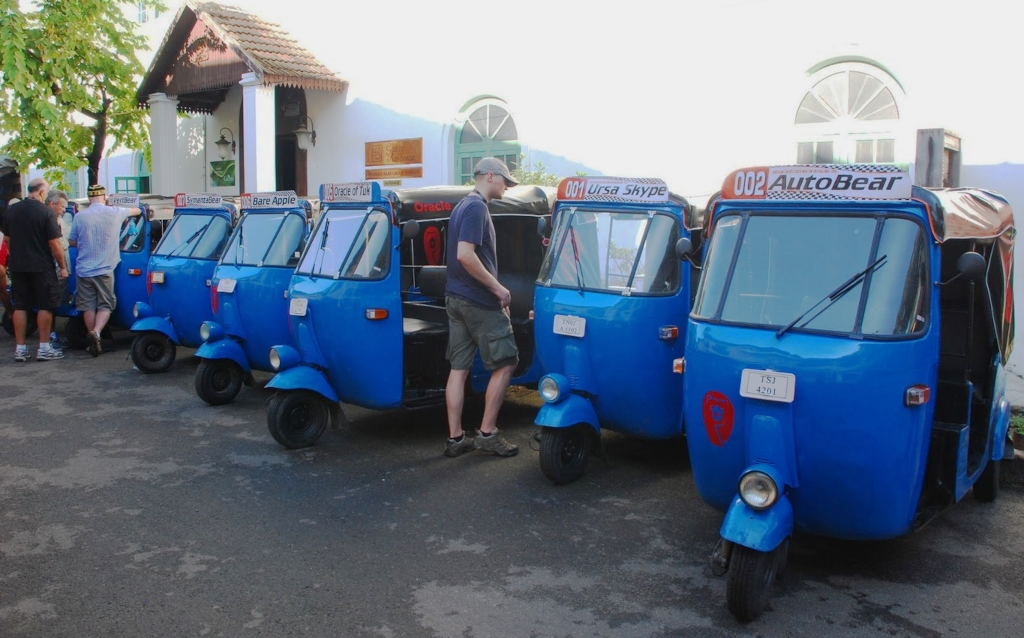
Sir, please let us be scamming you.
20 rupees or fuck off!
when it comes to being pushy.
Accomodation: Two days are enough and the selection of accommodations is modest. However, there’s a real gem among them: an Intourist hotel right next to the museum (for foreigners starting at 50 ₾; Stalinallee № 26). Service and amenities are said to have remained unchanged since then …

However, I stayed at the private accommodation Luka (25 ₾; 19 Aghmashenebeli St., no sign, entrance under the balcony). My first impression was decent. I got an entire vacation apartment (sleeps 6) to myself. Mother and 12-year-old daughter spoke sufficient English and the payment was in cash and without a receipt for two nights in advance. The first disappointment was the bathroom: the toilet had to be flushed with a bucket. On the evening of the second day, I was ripped off for the first and only time in Georgia. My daughter claimed I had only paid for one night and wanted another 25 ₾. After some discussion, including with my mother and a phone call with a friend who spoke good English, I gave in due to the lack of a receipt and made sure I got out of the place as quickly as possible the next morning..
On to the capital expressway over the expressway in just under two hours.
Tblisi
Tbilisi stretches for 20 kilometers along the Kura River valley. With approximately 1.3 million inhabitants, it is home to a good third of Georgia’s population and, with its hectic pace and excessive traffic, differs markedly from the rest of the country. Prices are also significantly higher. Affordable accommodations (₾ 15-25) are plentiful in the city center. Simply head to the Liberty Square or Rustaveli Ave. metro station and look at the posters. These are family-run businesses with converted or renovated apartments in old buildings, although the quality varies greatly.

Based on personal experience, I advise against “Maria Guesthouse & Tours,” Liberty Sq. 4 (₾ 25, noisy, security camera pointed directly at the beds) and warmly recommend “Fox Hostel” [both closed as of 2019]. The tourist office is a small counter in the entrance area of the National Museum, opposite the exit of the Liberty Sq. metro station. There’s nothing there except a thin brochure with a city map. The museum itself advertises, among other things, a permanent exhibition on the “Soviet occupation.” This history became obvious at the entrance: Three counters, two staffed by women, directed me to the third, which was empty. After waiting for almost ten minutes – there was no reason why the two women couldn’t have sold tickets at identically equipped workstations – I'd had enough of the Soviet work ethic, inspected the clean restroom and left the museum.
To use the metro (two lines), you buy a rechargeable chip card, which is also valid on the yellow city buses. The standard fare is ₾0.50, allowing transfers and return journeys within one hour. The Soviet-era subway is relatively deep underground and can be used as a nuclear shelter if necessary. The escalators run fast and the guards (nowadays unarmed) familiar from other Soviet metros are still stationed at the bottom. [To operate emergency stops.]
The ruins of Narikala Castle tower above the city. These can be reached by cable car from the river (accessible with the public transport smart card). On the same ridge is the statue of “Mother Georgia” (which looks much better from a distance) and in the valley behind it is the botanical garden (₾ 1). Although a large new administrative building has been built there, the garden is rather overgrown, lacking any scientific signage. Its higher elevations are completely neglected.
A walk downhill along the creek takes you past a Turkish mosque and the sulfur baths with their Ottoman-style domes. One can book a pool for up to four people; depending on the facilities, an hour costs between 1.50 ₾40 in the dilapidated municipal bathhouse and 50 ₾40 in the Royal.
The “Old Tbilisi” district between Liberty Square and the river has been renovated for tourists. It’s nothing but sterile, overpriced cafes and junk shops, which, with their offerings, could just as easily be found in Miami Beach or Rimini.

Art: In many parks, one sees beautiful statues, mainly bronzes (apart from the usual monuments to poets, military leaders, distinguished workers, etc.).
What’s striking is that none of these works of art are in any way defaced, as “graffiti artists” in Western European countries believe, must be the case. Outside of the capital, one sees no graffiti at all.
A stroll through the large flea market at the “Dry Bridge,” which is about half geared towards tourists, would have offered, if I had had the space in my luggage, a number of beautiful paintings and woodwork, as well as Soviet paraphernalia, for sale. One stall offered original police sabers—practical, but a bit too long to fit in my backpack.
To Yerevan: Two Georgians independent of each other asked me: Why are you going there?
(They weren’t entirely wrong) – I wanted to take the night train that runs every odd-numbered day. The main train station has been transformed into a shopping mall with some ticket counters.
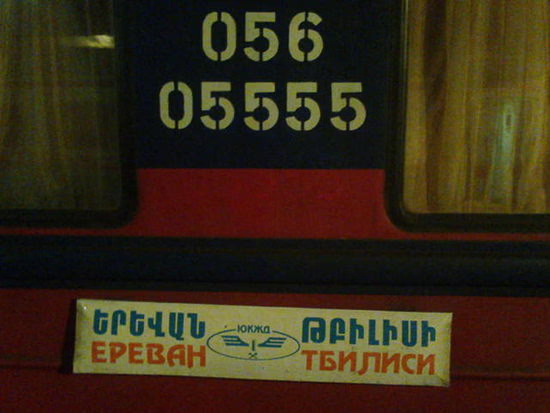
Third class couchettes cost ₾34 (ca. 15 €; fluctuates according to the dollar exchange rate) (Correct is “Swiss franc exchange rate,” as this is the currency used by the railway companies of the former Eastern Bloc. This is based on multinational agreements between the “Organisation for Co‑operation between Railways” russ. Организация Сотрудничества Железных Дорог in short ОСЖД)),rst class in a two-person compartment costs twice as much. The problem was that the passenger’s name had to be written in Cyrillic and the only English-speaking lady was on a break, so buying tickets took a good 20 minutes and left a somewhat confused but incredibly friendly saleswoman behind. And yet, even in third class, mattresses, blankets and bed linens are free—all in all, much better than the service provided by the German Federal Railways. The old but well-maintained carriage had only a few passengers; the rest was crammed with crates of lemons and ginger, which a woman was exporting as part of her personal business. I assume that clearance at Armenian customs was made easier by small, colorfully printed pieces of paper. Below me in the compartment, a cheerful, corpulent local, whose name was Giorgi like about a fifth of all Georgian men, soon conjured up a small bottle of Picnic vodka and an Armenian with a larger supply of beer, who also did not live to see the end of the journey.

On the cross-bed bunk – the arrangement on the broad-gauge line is like in India: four bunks as a “compartment,” two across from each other, with the aisle in between – a younger conductor slept diligently. He was a skinny, grumpy little man who repeatedly rolled his eyes when we – the beer was working – demanded that the toilet be unlocked. His colleague, who had grown gray in service, was barely visible, but you could smell him, as he sat in his cubbyhole, constantly ignoring the smoking ban in his carriage, puffing cigarettes. The border and customs controls were correct and problem-free.
Armenia
Yerevan on Sunday

On the platform in Tbilisi, I had seen two other Germans: K., a desk jockey in his mid-50s who works in Frankfurt but lives in Lower Franconia. He was pleasant enough but a bit hectic (he won’t have to wait long for his first heart attack) rushing through the Caucasus in three weeks. He had booked first class. There was also R. from Thuringia, a student who prefers visiting cold countries and climbing mountains on longer trips. He wants to spend this winter in northern Finland.
In Yerevan, you immediately notice that Armenia is considerably wealthier than Georgia. The houses, in particular, are in better condition; you don’t have to worry about getting hit on the head by a falling lump of plaster anywhere. The numerous expensive boutiques in the city center are striking. The shops stock considerably more Russian goods than in Georgia, which is particularly noticeable in the enormous vodka shelves (half a liter from around € 1.80). There are also some very interesting brands, such as Putinka, available at a price affordable for oligarchs or Kalashnikov – at least then you know why you have a headache the next morning 😋. In the city center, all street signs are also written in Latin. Armenians are considerably more reserved than Georgians. The shape of their noses is also quite different. In Georgia, the “classic profile” predominates, while Armenians tend to be of the flattened “semitic“ type. The classic short haircut with a neat side parting is still very fashionable.
English and German are more widely spoken than in Georgia.
It’s not uncommon to see cars with Syrian or Iranian license plates – one even had a license plate from the Gulf emirate of Sharjah.
In the city center, there’s the “Blue Mosque,” built by a Persian governor in the 18th century and renovated in the 1990s at Iranian expense. I found the inner courtyard (of this otherwise beautiful building) with the veiled women wandering around it depressing.

In Yerevan, at 6:30 a.m. on a Sunday morning, the first problem was exchanging money. We finally found an open exchange office. K., who had booked a room, was armed with a guidebook (luckily not LP!) and strode briskly ahead, leading our small group through the quiet city center. I also checked into the well-kept Envoy Hostel (52 Pushkin Av.; «Էնվոյ» հոսթել), but in the dormitory. It may have no windows, but there was a "New Testament" for every bed – hallelujah! A small breakfast was included in the price, but very untypical for the region, they charged for using the washing machine, a hefty € 5, which in Yerevan would get you two dinners and a beer. We arranged to meet R., who had booked elsewhere, at the Nagorno-Karabakh embassy at 10:00 a.m. the next morning to apply for a visa.
Yerevan also has a flea market on Sunday, although this one is more geared toward local needs. [On my next visit in 2021, it will be spruced up for tourists with permanent stalls – plenty of kitsch, nothing old except books.] One corner is stocked with used clothing, another with puppies, plus a wide selection of books, porcelain, Soviet paraphernalia and handicrafts, including particularly beautiful wood inlays. I bought two banknotes from the “Allied Military Authority” printed for Germany in 1944. I didn’t listen to Radio Yerevan during my stay—so no so no questions were answered.
Monday in Yerevan
“My leader” [„Mein Führer,“ the German expression was used when adrressing Hitler personally] K., his guidebook like an order of battle in hand [in German „Kampfbuch“ – „Mein Kampf“ being the title of Hitler’s book], along busy main roads on Monday morning, up the hill to the “Cascade.” On Wikipedia described: The Cascade consists of five hillside terraces connected with 572 steps. The building is 302 m (991 ft) high (excluding the 40th Anniversary of Soviet Armenia monument), 50 m (160 ft) wide and has a total area of 13 ha (32 acres), with a 15-degree slope. The uppermost platform is called the Monumental Terrace. It houses the 40th Anniversary of Soviet Armenia monument, standing 118 m (387 ft) tall.
In total, with numerous photo stops and one occasion when we got lost, it took us a good 1.5 hours to reach the embassy. In between, we caused considerable confusion with our stacks of postcards at a suburban post office. One of the nice ladies then tried out her good German on us.
A hill further on offers another beautiful view of the city. In the Victory Park near the top stands a monument to “Mother Armenia” – a converted Stalin monument.
The Yerevan metro dates back to the 1980s and has only one line. Its equipment follows Soviet standards. Each ride is paid for with orange plastic tokens, costing 100 Dr. (ca. 0,18 €).

Visa for Karabakh. Nagorno-Karabakh (German: Berg-Karabach) is was another country that doesn’t exist. During Soviet times, it was an exclave of Armenia in Azerbaijan, but in 1993, war broke out with subsequent displacement of all Azeris. The strip of land between it and Armenia proper was also occupied by Armenians and a separate republic was declared.
R. had also gotten lost, so we met shortly after 11 a.m. and submitted the applications (one passport photo). The fee of 3,000 Dr. can now be paid directly, not by bank deposit as described in travel guides. The previously charged express surcharges have been abolished. It is not possible to say whether travel there will be possible after the Azerbaijani reconquest in the fall of 2023. (As of July 2024)
We picked up our visas after lunch at 2:00 a.m. Overall, the process was problem-free. Anyone who wants to travel to Azerbaijan one day with the same passport can have the visa printed on a separate sheet, as they are not allowed to enter the country with a Karabakh stamp. Along with the visa, you receive a registration confirmation listing the regions you are allowed to travel to, sensibly with the note “except the front line.”
We passed the three-hour wait in a “MacGyros” and with a stroll through a farmers' market. K., in all his sensitivity as a German tourist, without hesitation shoved his digital camera under the nose of every stallholder without asking, which provoked a tirade from the beef offal seller – easy to understand even without knowing Armenian. R. and I marched off without looking back, half expecting the vendor to chase K. with a meat cleaver. In the market hall, there were several stalls selling dried and glazed fruit. From a woman whose son lives in Trier, I bought honey-glazed figs topped with a walnut – absolutely divine. The next day, I bought another pack of ten.
Buses to Stepanakert (the capital of Karabakh) depart early in the morning. In retrospect, I have to say that, given the poor transport connections alone, a three-day tour (Hyer-Reisen, approx. 145 €) with a good hotel for Karabakh would have covered the sights better.
Churches and monasteries
A must-see for any trip to Armenia is a visit to the churches in Echmiadzin (officially Vagharshapat since 1992), Garni and Artashat.
I'm not usually a fan of tours, but given the poor transport connections to these places, located not far from the capital, organized day trips seem quite worthwhile.
Genocide

On Tuesday, a visit to the Armenian Genocide Museum was on my agenda. Located on another hill, it consists of a modest but tasteful memorial with a museum that will be expanded by 2014. It’s located in a spacious park filled with solemn music.6
Return flight
On the return journey, the same grumpy conductor checked the tickets on the platform in Yerevan, but smiled friendly when he recognized me. Then one of those coincidences occurred that make individual travel an experience: G., the acquaintance from the outward journey, also appeared on the platform – after a warm greeting, it turned out that he was again in the bed under me. Also in the compartment with me were the two young Ukrainians who had “enjoyed” the carbolic smell of the cleaning product with me when I bought my ticket and who spoke passable English. It was another extremely pleasant evening. The conductor performed his duties with the same vigor – asleep – as usual and only showed some movement half an hour before arrival when he had the bedsheets delivered ”dawai, dawai,”
I then lingered for two more days in Tbilisi without visiting any other sights. Simply soaking up the spirit was enough; I’ll definitely be back!
The return flight was booked at short notice with Pegasus from the charming airport in Tbilisi, which is about 18 km outside the city and can be reached by city bus 37. The approach once again demonstrated the relaxed attitude Georgians have toward mass murderers: The access road is called “George W. Bush Avenue.” Check-in was at the ungodly hour of 2:30 a.m. It was striking that almost every passenger was seen off by the entire family, so the queue seemed incredibly long, but only a handful people actually checked in.

Conclusion Georgia: Warm, wonderful – go there yourself! The only other destinations I’ve been equally enthusiastic about were: firstly, southern Spain before the boom in 1985/6 and then in Sydney with its magnificent harbor. M. asked me – the “Schengen world” is closed to most Georgians due to the strict entry requirements [it was until 2015] – where she should go if she was looking for a beautiful place in the world. I wholeheartedly recommended Georgia to her!
Yerevan November 2021
The wildest coronavirus panic, when travel was impossible because governments around the world were under the illusion that viruses can be contained at national borders, was over. Now it was time to regain my mental equilibrium after being under house arrest. The opportunity arose for a trip to Georgia, where one could breathe freely again, i.e., without a mask. „Der Terror geht weiter!“
[Upper left an image of Karl Lauterbach. The mask hides the symbol of the 1970s city guerilla group RAF (in the original a submachine gun was shown). Lauterbach (Labour Party) was one of the most outspoken pro-vaxers and lockdown proponents during the CoViD years. (He served later as federal Minister of Health 2021–24. In this capacity he destroyed what was left of hospitals within the German National Health. On his last day in office he officially introduced a centrally stored file with a complete record of all medical data on each patient readable by all doctors and pharmacists – a hacker’s dream (and cracked several times during tests). Furthermore AI research based on these records was outsourced to google.]

Real wooden benches on a train in Armenia. At least the heating worked in one of the carriages.
The first pleasant change was that the Armenian railway company, which operates the trains between the two capitals, had acquired modern Russian carriages. There are even showers in the couchette cars. I had actually chosen Gyumri as my destination, simply “because it’s there.” The train arrived at 4:00 a.m., it was raining, temperature around freezing. No chance of a hotel. After I got drams from an ATM, the station guard left me sitting in the large waiting room until daybreak. I marched with luggage through the town, which had been destroyed in an earthquake in 1988. Absolutely dead. At one point, I fell flat on my face in a muddy puddle. I decided to hurry back to the station and take the slow train at 11:00 a.m. to Yerevan (1,000 drams, 3½ hours).
In Erwian, after a short subway ride toward the center, I bought a SIM card, then searched for the nearest hostel on google maps. Infinity Hostel run by a Thai woman just 300 meters away in the backyard, who was surprised by my unexpected arrival. Two evenings with the other guests, fortified by crystal-clear liquid, followed. First, there was a Jordanian-Palestinian “refugee” who had spent some time writing analyses for a social science institute in Berlin and, among other things, correctly predicted the problems in his homeland. In April 2021, Prince Hamzah bin al-Hussein, half-brother of the king, was arrested. The exact background of that power struggle remains unclear [the prince his wife and six children remained under house arrest four years later]. The Jordanian-Palestinian refugee felt threatened and also seemed to have problems obtaining a new passport from the regime abroad. What followed was an evening-long, intelligent conversation that deconstructed the policies of the “Zionist Entity” government from a left-wing, anti-Zionist perspective. Unfortunately, as the evening progressed, the bottle got emptier, a misunderstanding arose when the gentleman had to be made aware that he would not be allowed to say certain things out loud in Germany if he were to work in Berlin again. Also participating in the discussion was a German man who had checked in with his girlfriend that same day for three weeks. The two, in their mid-30s, had set off on a “world trip” together in a converted minivan a few weeks earlier. In southern Armenia, a van had crashed into them. Now, not only were they having trouble getting their car repaired, but insurance and customs issues meant they would have to wait several weeks, even though they had the active support of a local “fixer.” That they might drive into one of the major political crises is another matter entirely. I'm keeping my fingers crossed for the two very nice people who put up with me for three days.
Since I had obtained a visa for Nagorno-Karabakh but was unable to go in 2013, I enquired again. The region was largely occupied by the Azerbaijani military in the autumn of 2020. A (provisional) peace agreement dated November 10, 2020, stipulates that all seven districts formerly belonging to the Soviet Republic of Azerbaijan will be returned to that country. Except for a 5 km wide corridor through Lachin, the area is to become an exclave of Armenia again. I couldn’t find out whether and when entry for foreigners would be possible. The embassy mentioned still existed, but it was closed. I found a reference online to an online application process, but that would take a week. Until then, I would have been drunk myself silly in Yerevan, because there’s not much to do or see. ☪
I visited the sights of Yerevan once more; a few photos are below. It was already too cold for the botanical garden. Above the “Cascade,” whose museum was still closed due to the CoViD, is Victory Park, with a statue of “Mother Armenia,” who, in the finest Soviet style, appears considerably more grim with her sword than her counterpart in Tbilisi. The park itself is the usual monument to the Great Patriotic War. Beneath the statue is a small museum with heavy Soviet equipment around it. This was expanded in the 1990s to commemorate the Armenian victory in the First Karabakh War, which, as mentioned, seemed quite out of place after Christian Armenia’s losses at the hands of the Muslim Azerbaijani hordes, indirectly supported by the Turks, the previous year. One of the guards asked for the euro coins she had collected as tips to be exchanged for banknotes – I was happy to oblige.
Yerevan, after three days, isn’t the most exciting city on the planet. On top of that, a group of Persians had booked their accommodations in advance. So I took the night train back to Tbilisi. In addition to a vaccination, Georgia still required a PCR test. This cost locally just over € 15 – the same service in Germany a hefty € 70+.
The Georgian border control was surprisingly fussy. First-class passengers were checked inside the carriage, while platzkartniki were allowed to wait outside at a kiosk in the rain. In the compartment with me was an Estonian woman “non-citizen“7 who, in addition to her “passport” (Estonian non-citizens have a “foreigner’s passport.” Here shown is the type from 2007, their citizenship marked as XXX – great!)
 needed a wad of additional documents to be allowed to visit her daughter in Armenia and transit back through Georgia.
needed a wad of additional documents to be allowed to visit her daughter in Armenia and transit back through Georgia.
















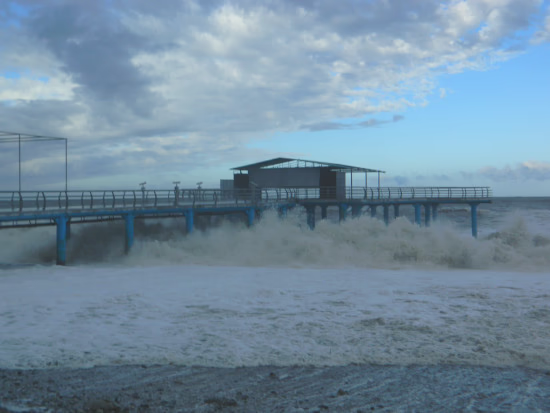






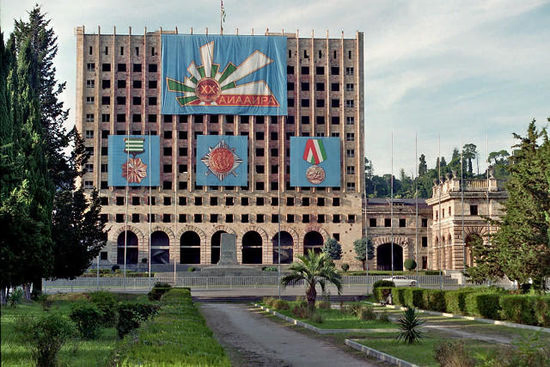















































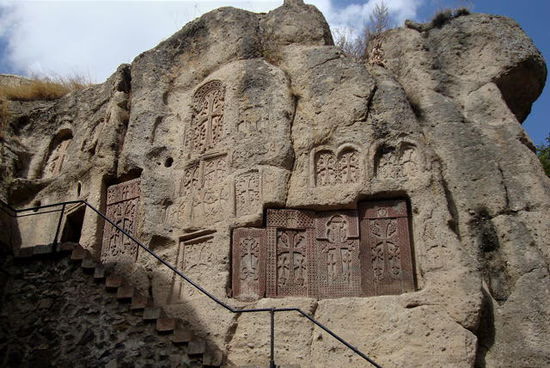



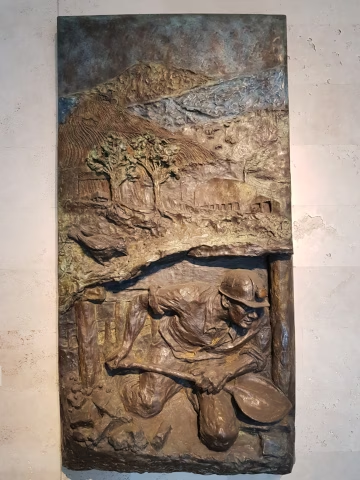




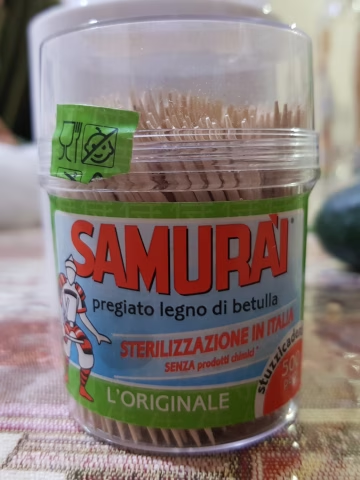






_Stadtsowjet_1947_640px-144dpi.avif)
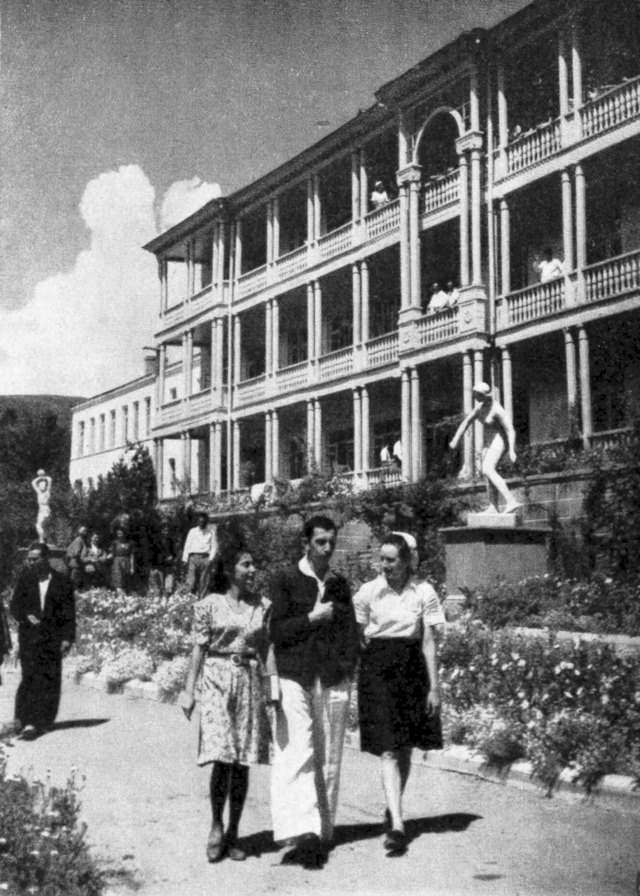
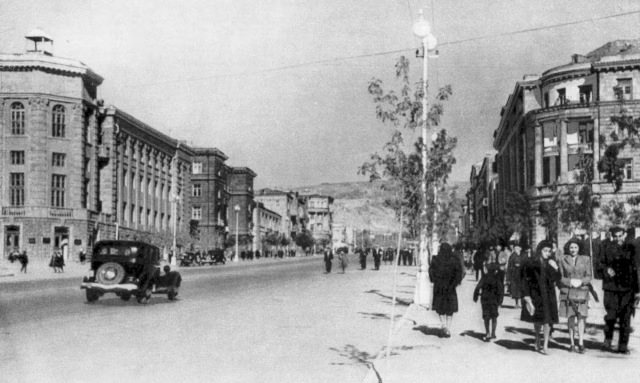
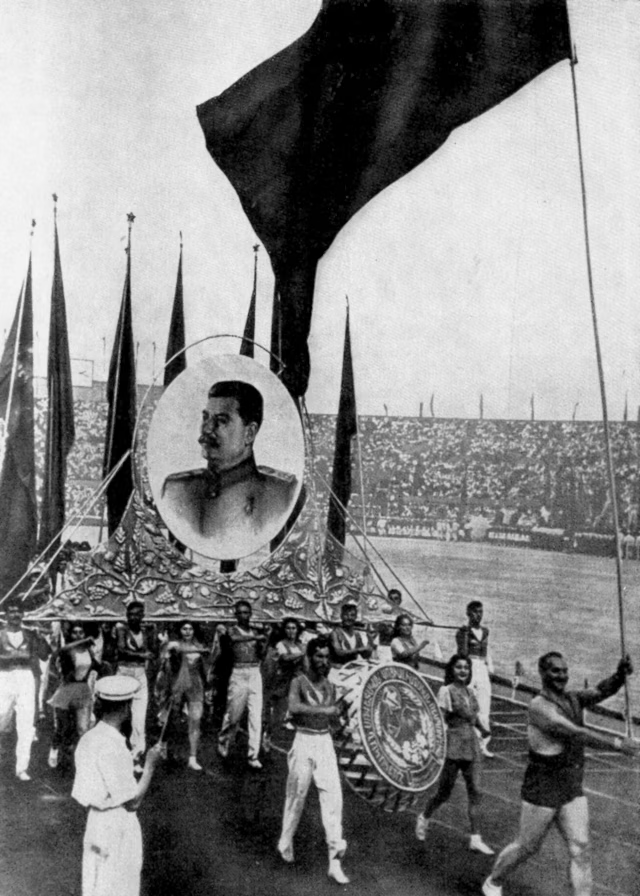
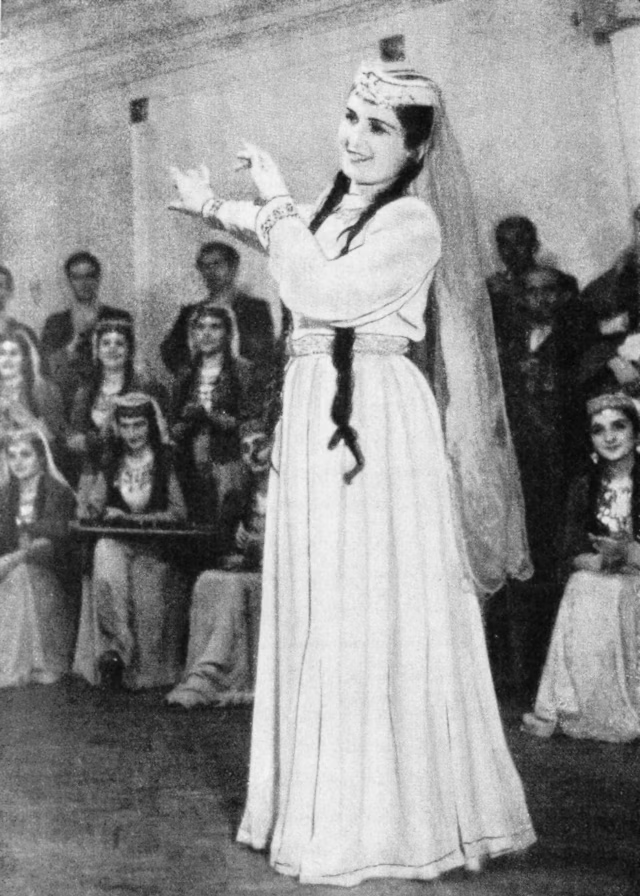
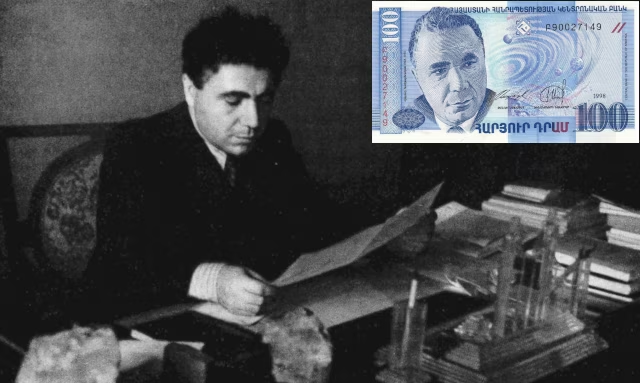
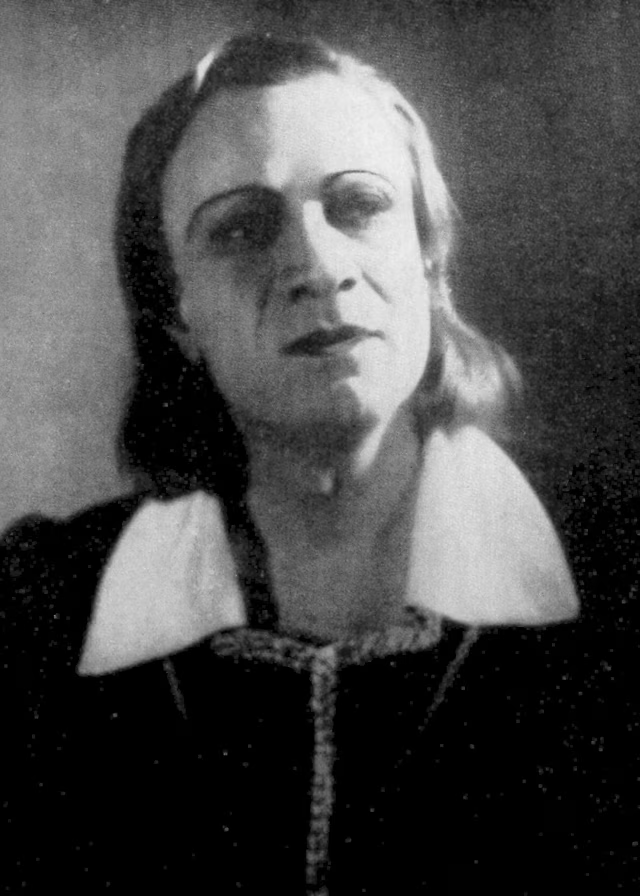

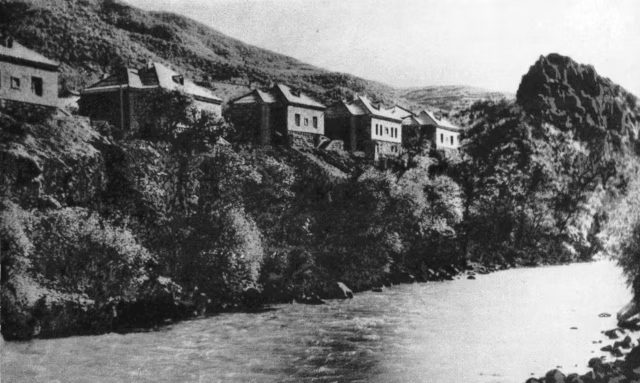
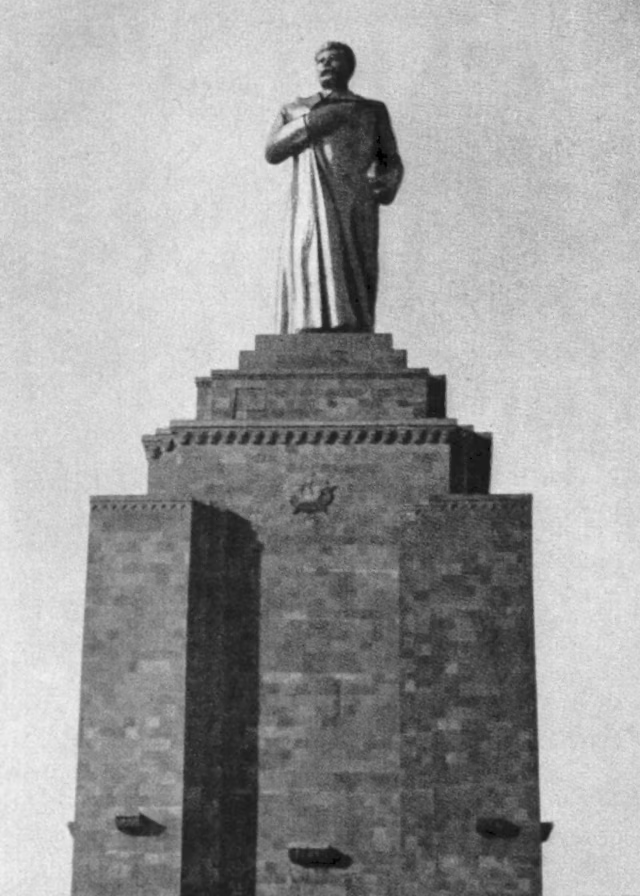





_Avtandil-Monaselidze-ავთანდილ-მონასელიძე_20210513_tn.avif)





